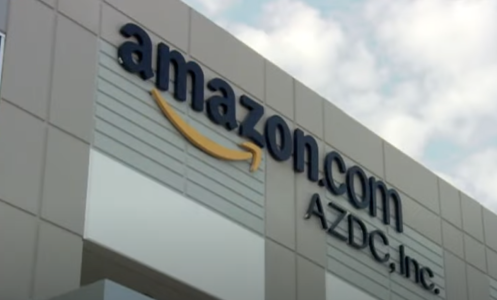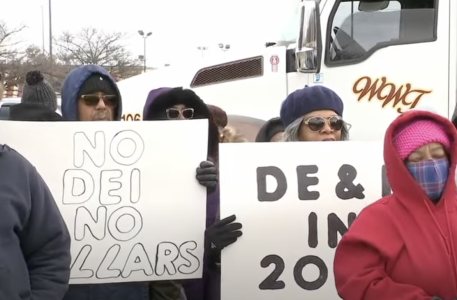A massive Amazon boycott is taking place—Why is it happening?
- Replies 2
If you’re like most Americans, Amazon has become a household staple—whether it’s for last-minute gifts, groceries from Whole Foods, or streaming your favorite shows on Prime Video.
But this May, a growing number of shoppers are putting their Amazon carts on hold. From May 6 to May 12, a nationwide boycott is taking aim at the retail giant and its many affiliates.
So, what’s fueling this movement, and does it really make a difference? The GrayVine is here to break it all down for you.
Why Is Amazon in the Hot Seat—Again?
This isn’t the first time Amazon has faced a consumer boycott, and it likely won’t be the last.
A second boycott targeting Amazon and its affiliated businesses is scheduled from May 6 to May 12, organized by consumers objecting to what they describe as “corporate greed,” reduced commitments to diversity, equity, and inclusion (DEI) by various companies, and the rollback of federal DEI programs under President Donald Trump’s administration.
The initiative is being led by The People’s Union, the same grassroots organization that launched a one-day consumer boycott on February 28.

What Does the Boycott Cover?
This upcoming boycott includes Amazon and its subsidiaries such as Whole Foods Market, Amazon Fresh, Amazon Prime Video, Audible, Twitch, Ring, Zappos, and Kindle.
Since February, the group has also organized weekly boycotts against businesses like Walmart and General Mills, as well as a three-day economic boycott in April.
Plans from The People’s Union continue through July 4, when organizer John Schwarz has said longer-term actions aimed at specific companies will be announced.
These efforts are in addition to separate protests against other retailers, including Target, led by different advocacy groups.
John Schwarz, the founder of The People’s Union, initially proposed a national one-day consumer boycott through a video post that, he later told USA TODAY, unexpectedly gained widespread attention.
Since then, Schwarz—who is active on social media under the handle @theonecalledJai—has outlined a series of boycott campaigns.
Source: @theonecalledJai / Instagram.
In a May 2 social media post, Schwarz criticized Amazon CEO Jeff Bezos following the White House’s announcement that Amazon would not disclose the increased costs of goods due to newly imposed tariffs.
Schwarz commented that Bezos had retreated on the issue, stating, “And this is what we're up against. A billionaire who doesn't pay his fair share of taxes. A billionaire who manipulates the markets, silences his sellers and flaunts his obscene wealth while Americans struggle to stay afloat.”

In a May 4 post, he added that the Amazon boycott was “rattling the corporate cage. We're letting Jeff Bezos know and Amazon know that we've had enough.”
Amazon has not commented on the boycott.
What’s the Goal?
The effectiveness of consumer boycotts varies. As said in previous reports by USA TODAY, conservative activists have had some success pressuring companies to scale back DEI initiatives by organizing boycotts that impact sales.
However, Brayden King, a professor at Northwestern University’s Kellogg School of Management, has noted that overlapping or unclear boycott messages can create confusion among consumers about which actions to take.
Target continues to face several boycott efforts, including one launched on February 1 by activists in Minnesota and another led by some members of the Black faith community.
The latter began a 40-day “Target Fast” during Lent and Easter and has since evolved into an open-ended boycott. Target’s stock has declined since the start of the year, and some firms have reported reduced in-store and online traffic.
However, other data suggests that for companies like Amazon, web traffic and sales have remained steady or even increased during certain boycott periods.
What’s Next? More Boycotts on the Horizon
The People’s Union has announced additional upcoming actions, including:
Source: WUSA9 / Youtube.
Separately, the Latino community has been promoting the hashtag #LatinoFreeze on social media, urging supporters to “hold your money” in response to freezes on DEI programs, funding cuts for the National Institutes of Health, and immigration-related actions.
The website latinofreeze.com lists companies based on their stance toward DEI initiatives.

What are your thoughts on the boycotts? Do you think these actions can really change corporate behavior? We’d love to hear your thoughts and experiences in the comments below!
But this May, a growing number of shoppers are putting their Amazon carts on hold. From May 6 to May 12, a nationwide boycott is taking aim at the retail giant and its many affiliates.
So, what’s fueling this movement, and does it really make a difference? The GrayVine is here to break it all down for you.
Why Is Amazon in the Hot Seat—Again?
This isn’t the first time Amazon has faced a consumer boycott, and it likely won’t be the last.
A second boycott targeting Amazon and its affiliated businesses is scheduled from May 6 to May 12, organized by consumers objecting to what they describe as “corporate greed,” reduced commitments to diversity, equity, and inclusion (DEI) by various companies, and the rollback of federal DEI programs under President Donald Trump’s administration.
The initiative is being led by The People’s Union, the same grassroots organization that launched a one-day consumer boycott on February 28.

A second boycott of Amazon and its affiliates, organized by The People’s Union, took place from 6 to 12 May as shoppers protested issues such as corporate greed and reduced diversity, equity and inclusion (DEI) efforts. Image source: WUSA9 / Youtube.
What Does the Boycott Cover?
This upcoming boycott includes Amazon and its subsidiaries such as Whole Foods Market, Amazon Fresh, Amazon Prime Video, Audible, Twitch, Ring, Zappos, and Kindle.
Since February, the group has also organized weekly boycotts against businesses like Walmart and General Mills, as well as a three-day economic boycott in April.
Plans from The People’s Union continue through July 4, when organizer John Schwarz has said longer-term actions aimed at specific companies will be announced.
These efforts are in addition to separate protests against other retailers, including Target, led by different advocacy groups.
John Schwarz, the founder of The People’s Union, initially proposed a national one-day consumer boycott through a video post that, he later told USA TODAY, unexpectedly gained widespread attention.
Since then, Schwarz—who is active on social media under the handle @theonecalledJai—has outlined a series of boycott campaigns.
Source: @theonecalledJai / Instagram.
In a May 2 social media post, Schwarz criticized Amazon CEO Jeff Bezos following the White House’s announcement that Amazon would not disclose the increased costs of goods due to newly imposed tariffs.
Schwarz commented that Bezos had retreated on the issue, stating, “And this is what we're up against. A billionaire who doesn't pay his fair share of taxes. A billionaire who manipulates the markets, silences his sellers and flaunts his obscene wealth while Americans struggle to stay afloat.”

Organizers claim these consumer boycotts are a reaction to both Amazon’s business practices and broader corporate and political shifts, although the effectiveness of such boycotts remains mixed according to experts. Image source: WRTV Indianapolis / Youtube.
In a May 4 post, he added that the Amazon boycott was “rattling the corporate cage. We're letting Jeff Bezos know and Amazon know that we've had enough.”
Amazon has not commented on the boycott.
What’s the Goal?
The effectiveness of consumer boycotts varies. As said in previous reports by USA TODAY, conservative activists have had some success pressuring companies to scale back DEI initiatives by organizing boycotts that impact sales.
However, Brayden King, a professor at Northwestern University’s Kellogg School of Management, has noted that overlapping or unclear boycott messages can create confusion among consumers about which actions to take.
Target continues to face several boycott efforts, including one launched on February 1 by activists in Minnesota and another led by some members of the Black faith community.
The latter began a 40-day “Target Fast” during Lent and Easter and has since evolved into an open-ended boycott. Target’s stock has declined since the start of the year, and some firms have reported reduced in-store and online traffic.
However, other data suggests that for companies like Amazon, web traffic and sales have remained steady or even increased during certain boycott periods.
What’s Next? More Boycotts on the Horizon
The People’s Union has announced additional upcoming actions, including:
- May 20–26: Second Walmart boycott
- June 3–9: Target boycott
- June 24–30: McDonald’s boycott
- July 4: Independence Day Blackout
Source: WUSA9 / Youtube.
Separately, the Latino community has been promoting the hashtag #LatinoFreeze on social media, urging supporters to “hold your money” in response to freezes on DEI programs, funding cuts for the National Institutes of Health, and immigration-related actions.
The website latinofreeze.com lists companies based on their stance toward DEI initiatives.
Key Takeaways
- A second boycott of Amazon and its affiliates, organized by The People’s Union, took place from 6 to 12 May as shoppers protested issues such as corporate greed and reduced diversity, equity and inclusion (DEI) efforts.
- The boycott included all Amazon-owned businesses, such as Whole Foods Market, Amazon Fresh, Prime Video, Audible, Twitch, Ring, Zappos and Kindle.
- Organizers claim these consumer boycotts are a reaction to both Amazon’s business practices and broader corporate and political shifts, although the effectiveness of such boycotts remains mixed according to experts.
- Additional boycotts of other major retailers, including Walmart, Target and McDonald’s, are planned in the weeks ahead, while various communities—including the Latino community—are also encouraging separate economic protest actions.
What are your thoughts on the boycotts? Do you think these actions can really change corporate behavior? We’d love to hear your thoughts and experiences in the comments below!






